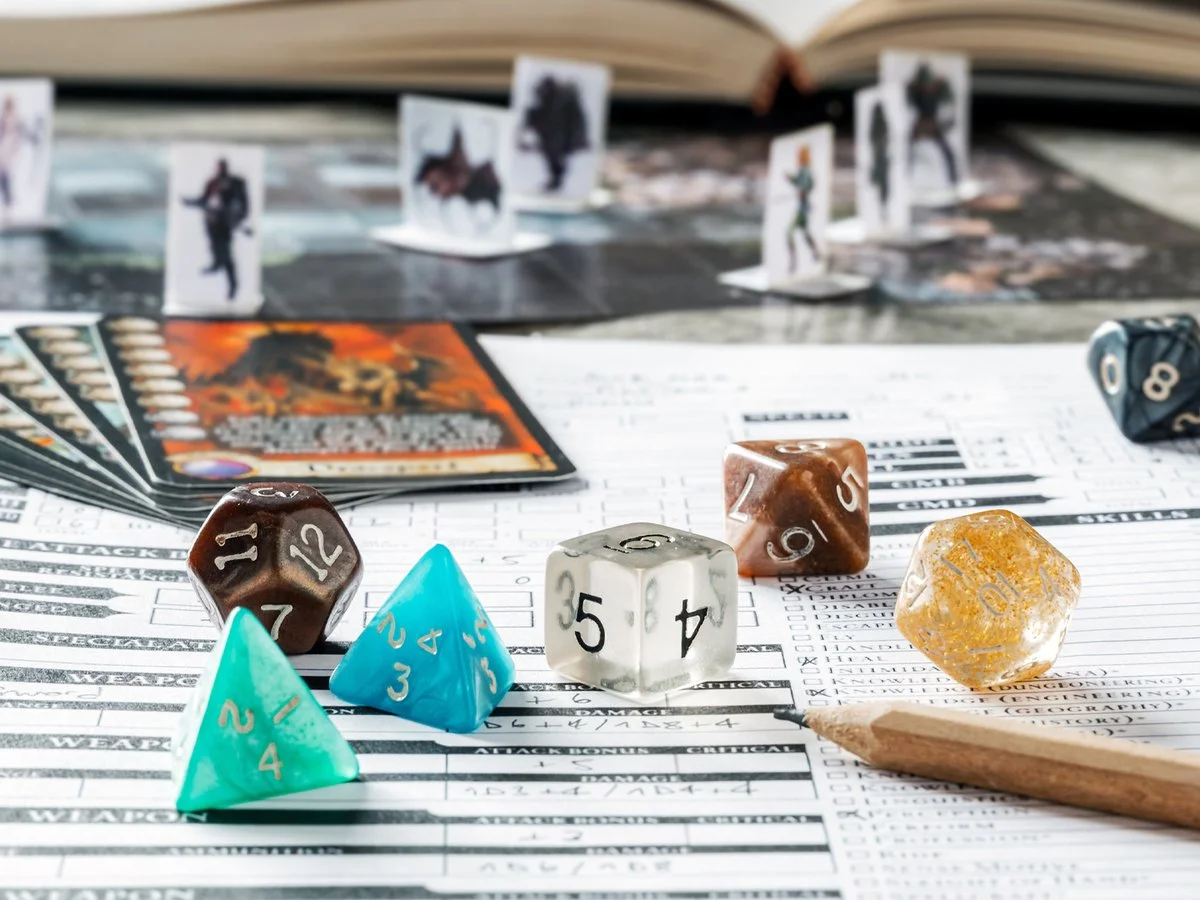Thinking about Joining Roll For Therapy? This Blog is for you
What is Roll for Therapy?
Roll for Therapy is a new service that Sharp Wellness in Mckinney, Texas is offering to our clients. This is a group service that uses what is called a Therapeutic TTRPG to facilitate the group process. This type of group is a new and engaging method for providing group services that more and more therapists are exploring and researching. By using ideas from play therapy with children, therapists are hoping to find ways to engage with teen and adult clients through play. Their hope is to provide more appealing and indirect ways for clients to engage in therapy beyond just talk therapy.
What is a TTRPG?
A TTRPG is a genre of board game. The acronym stands for tabletop role-playing game. The most widely known game in this genre is Dungeons & Dragons (D&D). Others include Pathfinder, Vampire the Masquerade, Call of Cthulhu (ka-thu-lu), and many, many others. Some are even based on famous settings like Lord of the Rings and Star Wars.
In these games, players create characters to adventure through a world together. Typically, one of the players serves as a game master (GM) or dungeon master (DM). The person in this role creates and runs the world. They play the monsters that the characters fight and the other people that characters meet along their adventures. These adventures could be in fantasy worlds, space/sci-fi settings, or the modern world. With so many different games available, there is a game that could fit just about any interest someone might have.
A common theme within this genre of game involves rolling dice to determine outcomes. Each character has strengths and weaknesses that can add or subtract from the rolls. Sometimes the outcome is pure chance. Each game takes its own approach in determining how outcomes are determined and what the game play looks like. Dice rolling is just the most common.
So… What are Therapeutic TTRPGs?
With teens and adults already engaging in board games and TTRPGs, like Dungeons & Dragons, some therapists have begun to utilize games as a vehicle for therapy. Thus, the idea of Therapeutic TTRPGs was born. Using rules already developed to make a fun game is a lot easier and more successful than therapists trying to design their own games. Trust me, we are not good game designers.
The use of play in a therapeutic setting has become widely known and researched. This has become known as play therapy. Most often the use of play therapy is with children. However, there is growing research and exploration that supports the use of play with teens and adults.
What is known about humans across the lifespan is that the environment for this play must feel safe and inviting. For children, this tends to be less emphasis on structure and expectations. For adults, this tends to be a heavier emphasis on structure and expectations. One of the best ways for adults and teens to engage in play is through more structured activities like games.
As adults, it becomes harder for us to engage in pure, imaginative play. We become accustomed to structure and rules that much of the play that younger children engage in simply lacks. Oftentimes, there is a belief that adults cannot or should not engage in play. Yet, we still need to play. Our brains crave it. This craving is why many adults adopt hobbies. These provide more structured or “appropriate” activities that adults can still engage in play.
When playing games, like Dungeons and Dragons, in a therapy setting, a professional can facilitate play in a way that enables clients to indirectly process stressful and overwhelming topics. This indirect processing allows people of all ages to feel more comfortable confronting their challenges.
What is it like to play a Therapeutic TTRPG?
It’s pretty similar to normal D&D or how non-therapeutic TTRPGs are played. The therapist takes on the role of game master, or the person who runs the game. Meanwhile, clients take on the role of players and create characters. A story and scenarios are created by the therapist and the group plays the game as they would normally.
The biggest difference is the intention behind the scenarios and challenges created by the therapist. A normal game is made with the intention of fun. Thus, decisions are made based on that. Under the therapist's guidance, clients engage in storytelling, combat, and even puzzle solving that has all been created by the therapist to facilitate therapeutic processing.
Depending on the goals of the group, the focus of the play will vary. In a group focused on social skills, the therapist may set up a situation where clients have to communicate with each other in healthy ways in order to achieve a goal. A group focused on managing anxiety might be walked through a scenario in which they learn grounding skills to manage overwhelming emotions.
Final Thoughts
Using games like Dungeons and Dragons, Pathfinder, and other TTRPGs, therapists can support clients through more indirect interventions and more engaging experiences. With the guidance of a therapist, this can be a more appealing way for people to engage in difficult topics and reflect on themselves. As more is learned about the benefits of play for adults, there is a hope to provide different forms of therapy that can meet the needs of more and more people!
Interested in Therapeutic TTRPGs? Sharp Wellness in Mckinney, Texas is offering groups now! Contact us to learn more information about our Therapeutic TTRPG group called Roll for Therapy or any of our other services!

